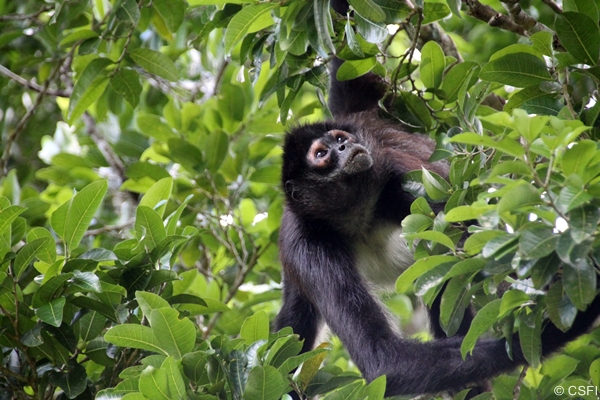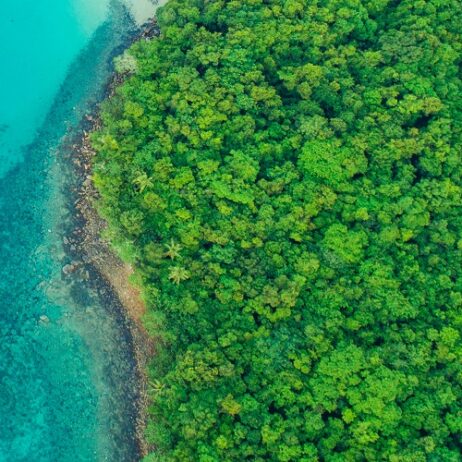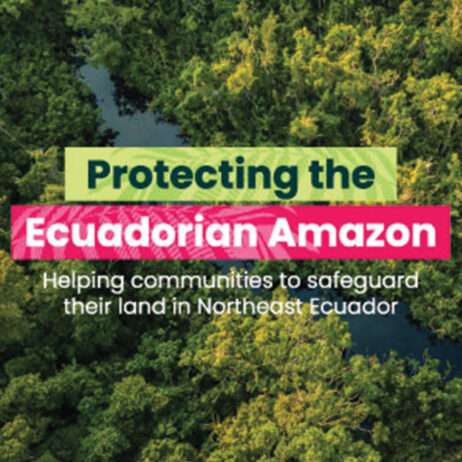
Simon Barnes describes some of the unique adaptations which make spider monkeys so interesting in his latest blogpost in Barnes’s Bestiary.
We primates went to a lot of trouble to evolve an opposable thumb. It’s one of the things that marks us as primates, and it’s generally considered that it was all about helping our common ancestor to climb trees. So then the spider monkeys – one of us — went to just as much trouble to lose it. You can see what’s left – a hint of a memory of a thumb on the palm of a recognisable hand – and just about as useful as a bull’s nipple.
Oddly enough, it’s an adaptation for climbing trees. Swinging from branch to branch – brachiation – is easier with hooks than grabs. You’re also more likely to slip, but spider monkeys aren’t short of back-up grabbing equipment. They are better equipped than the rest of us primates, because instead of a mere four limbs, they’ve got five.
The tail is a fifth leg, its tip is a third – or fifth – hand. Their tails have a palm of skin, and as the monkeys move through the branches they give a weird impression of a glorious superfluity of limbs, just as a spider does. The tail can support their entire bodyweight, and they also use it to grasp and pluck fruit. Such a handy device – a shame we humans never developed it.
They live almost entirely on fruit. It takes a special place to supply fruit on a 12 month basis, but that’s tropical forest for you. Even so, spider monkeys need an awful lot of forest if they’re to find fruit every day. It follows that like most rainforest specialists, they are endangered.
Perhaps one of the things that fascinates us most as we look at non-human life is movement: so many ways of getting about the place, so many ways we can’t easily relate to: running cheetahs, leaping dolphins, seagulls in an airy glide, brachiating primates and slithering snakes.
These monkeys add another layer of wonder: clearly related to us, but equipped with that lavish extra limb, which they use with as much insouciance as we use our legs to climb a stair and our hands to grasp the banister. Geoffroy’s Spider Monkey is one of seven species of spider monkey and one of the largest. You can find them in the dry forests of northern Belize, where World Land Trust (WLT) is protecting land with their Jungle for Jaguars appeal.
More information
Donations to Jungle for Jaguars will go towards the purchase and protection of 8,154 acres of jungle habitat for Belizean wildlife, including the Geoffroy’s Spider Monkey, that is otherwise threatened by deforestation.


